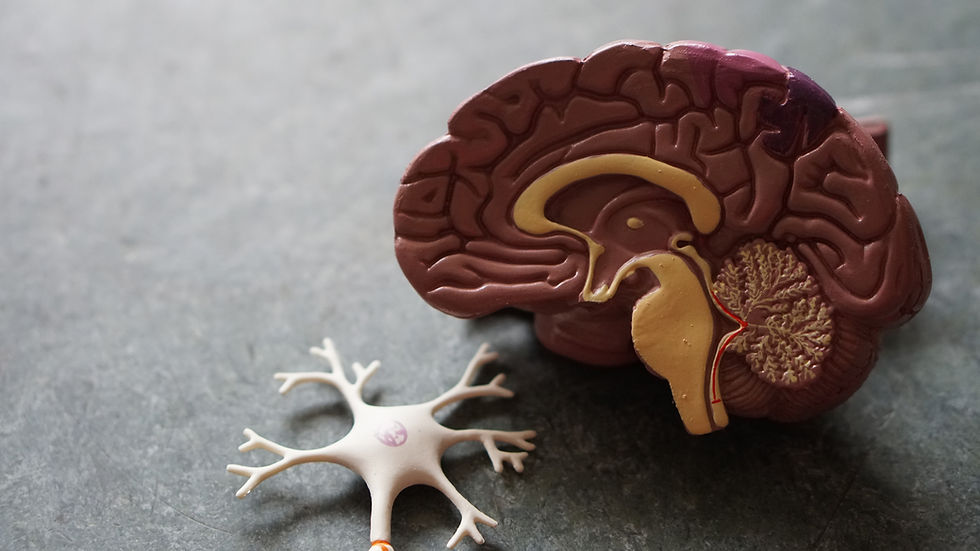Cognitive Behavioral Therapy (CBT) and Digital Apps: A Match Made in Mental Health
- Therapy Journal

- Jun 6, 2023
- 4 min read
Updated: Jan 31, 2024

1. The Transformative Power of CBT: A Foundation for Mental Wellness
Cognitive Behavioral Therapy (CBT) has proven to be a cornerstone in mental health treatment, offering individuals practical tools to reshape thought patterns and behaviors. In this section, we'll explore the principles of CBT and its efficacy in promoting positive mental health.
2. Digital Frontiers: The Evolution of Mental Health Apps
As technology continues to advance, mental health apps have emerged as valuable tools for individuals seeking support outside traditional therapeutic settings. This section will delve into the evolution of digital apps and their role in democratizing mental health resources.
3. The Marriage of CBT and Digital Solutions
3.1. The Rise of CBT in Digital Apps
CBT's adaptability finds a natural home in digital applications. This section will highlight the integration of CBT principles in mental health apps, emphasizing their accessibility and user-friendly nature.
3.2. The Therapy Journal App: A Digital Companion Grounded in CBT
The Therapy Journal App stands out as a powerful ally, seamlessly incorporating CBT principles into its framework. This section will explore how the app aligns with CBT methodologies, providing users with structured tools for cognitive restructuring and behavior modification.
3.3. Guided Reflection for CBT Practices
The Therapy Journal App goes beyond basic journaling, offering structured prompts and exercises that guide users through CBT practices. This section will explore how these features can enhance the user's ability to implement CBT techniques in their daily lives.
4. Personalizing the Path to Mental Wellness with CBT
4.1. Goal Setting for Cognitive Restructuring
Setting and achieving personalized goals are fundamental in CBT. The Therapy Journal App empowers users to set realistic goals and track their progress, fostering a sense of control and accomplishment. This section will discuss the significance of goal-oriented reflection in promoting positive changes through CBT.
4.2. Encouraging Positive Affirmations for CBT Success
Acknowledging and reinforcing positive aspects of one's CBT journey is vital. The Therapy Journal App incorporates techniques to encourage users to celebrate their achievements, fostering self-compassion and resilience.
5. The Future of Digital Mental Health: Innovations in CBT Apps
This section will speculate on the future developments in digital mental health apps, especially those grounded in CBT principles. Potential advancements in artificial intelligence and machine learning will be explored, along with their impact on individuals navigating mental health challenges.
6. Conclusion: Forging a Future of Mental Wellness with CBT and Digital Solutions
CBT, when coupled with the accessibility of digital apps like the Therapy Journal App, forms a powerful alliance in promoting mental wellness. By leveraging technology, individuals can seamlessly integrate evidence-based therapeutic practices into their daily lives, fostering resilience and paving the way for a brighter future.
Helpful Tips for Insights:
Cognitive Behavioral Therapy (CBT) is a widely used and effective form of therapy for treating a variety of mental health conditions, such as anxiety and depression. It involves identifying and changing negative patterns of thinking and behavior. In recent years, CBT has been combined with digital technology to create CBT-based digital apps that can help individuals to learn and practice CBT techniques.
One of the main ways that CBT and digital apps are being used today is through self-help or self-guided CBT programs. These apps provide users with resources, tools, and exercises to help them learn and practice CBT techniques, such as cognitive restructuring and exposure therapy. These apps can be particularly useful for individuals who have difficulty accessing traditional in-person therapy, or who want to supplement their therapy with additional resources and support.
Another way that CBT and digital apps are being used is through virtual therapy sessions. These sessions are conducted via videoconferencing, and allow individuals to receive therapy from the comfort of their own homes. This can be especially beneficial for individuals who live in remote or rural areas, or for those who have mobility issues.
In the future, it's likely that we will see even more integration of CBT and digital technology. For example, we may see the development of more personalized and adaptive CBT apps, which can adjust the content and exercises based on the user's progress and needs. We may also see the use of virtual reality and other advanced technologies to provide a more immersive and interactive CBT experience.
Additionally, big data and machine learning will come into play to improve the effectiveness of CBT and digital apps. This will allow for personalized treatment plans and interventions based on an individual's specific needs and progress.
It's also important to note that while digital apps and virtual therapy can be an effective way to provide CBT and support, they should not be used as a substitute for in-person therapy. The interaction between the therapist and client is an important aspect of therapy and cannot be replicated by digital tools.
Overall, the combination of CBT and digital technology is providing new and innovative ways to improve access to mental health care and support. As technology continues to evolve, we can expect to see even more integration of CBT and digital apps in the future, providing even more opportunities for individuals to learn and practice CBT techniques and improve their mental health.









Comments